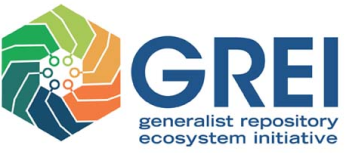Search the repository
Recently published
132690 results
- Dataset for 'Identification of immunodominant T cell epitopes in SARS-CoV-2 spike protein in Syrian hamsters'This dataset contains all raw data underlying the main and supplementary figures of the manuscript “Identification of Immunodominant T Cell Epitopes in the SARS-CoV-2 Spike Protein in Syrian Hamsters” published in The Journal of Immunology. It includes measurements of T cell responses in Syrian hamsters immunized with a replication-defective ChAd-SARS-CoV-2-S vaccine encoding a pre-fusion–stabilized Wuhan-1 spike protein. The dataset also provides comparative T cell–response data following in vivo CD4 or CD8 depletion. In addition, it identifies key CD4 and CD8 epitopes within the most immunogenic regions of the spike protein.
- PA-MIP and C-MIP approaches on Critical Thinking SkillsThis dataset supports a study investigating the impact of PA-MIP and C-MIP approaches on students’ critical thinking skills (CTS), as well as the gender effect on CTS. The dataset includes coded data from both discussion transcripts and self-reflection reports, and Epistemic Network Analysis (ENA) matrices representing relationships among interpretation, analysis, evaluation, inference, explanation, and self-regulation.
- From drill to chill: The effect of military service on subjective well-being in rural ChinaREADME: Replication Package Paper Title From drill to chill: The effect of military service on subjective well-being in rural China Authors: Chunkai Zhao (South China Agricultural University) Boou Chen (Nanjing University of Finance and Economics) Huilin Xie (Sun Yat-sen University) Date: Jan 9, 2026 This folder contains the programs and materials required to reproduce the results of the paper "From drill to chill: The effect of military service on subjective well-being in rural China."
- Hydroxyapatite characterizationmorphological and chemical characterization
- The Economics of Resilience: How Firms Overcome Perceived Policy Shocks in a Dynamic EnvironmentThis replication package provides all the data, code, and instructions required to reproduce the main empirical results of the above-mentioned research paper. The package is designed to facilitate transparency and enable independent verification of all statistical findings reported in the study.
- Supplementary MaterialSupplementary Material
- CollectionDepartment of PsychologyResearch data related to the Department of Psychology of the University of Milano - Bicocca
- When remembering items is easier than remembering orderDataset relative to the study reported in the article "When remembering items is easier than remembering order". The study aimed at investigating whether remembering a series of items and their order are separate operations. The dataset reports the results of an immediate serial recall task performed with two conditions of cognitive load (high and low) and three conditions of aspect of the series to remember (items, order and both). All the scores recorded in the dataset are expresses as a proportion of correct responses.
- Dataset for relative contributions of magmatic and hydrothermal processes on the extreme light rare earth element (LREE) enrichment in carbonatites constrained by a joint petrologic-geochemical studyThis file contains major element oxide and trace element concentration data of carbonatites and silicates. Additionally, the stable C-O for carbonatites and alkaline lamprophyres and triple oxygen isotopic compositions of alkaline silicates are given along with the EPMA measured composition of various minerals found in carbonatites and associated silicates. Analytical details and standards are also reported.
- data1Survey Questionnaire Data
1

The Generalist Repository Ecosystem Initiative
Elsevier's Mendeley Data repository is a participating member of the National Institutes of Health (NIH) Office of Data Science Strategy (ODSS) GREI project. The GREI includes seven established generalist repositories funded by the NIH to work together to establish consistent metadata, develop use cases for data sharing, train and educate researchers on FAIR data and the importance of data sharing, and more.
Find out moreWhy use Mendeley Data?
Make your research data citable
Unique DOIs and easy-to-use citation tools make it easy to refer to your research data.
Share data privately or publicly
Securely share your data with colleagues and co-authors before publication.
Ensure long-term data storage
Your data is archived for as long as you need it by Data Archiving & Networked Services.
Keep access to all versions
Mendeley Data supports versioning, making longitudinal studies easier.
The Mendeley Data communal data repository is powered by Digital Commons Data.
Digital Commons Data provides everything that your institution will need to launch and maintain a successful Research Data Management program at scale.
Find out more